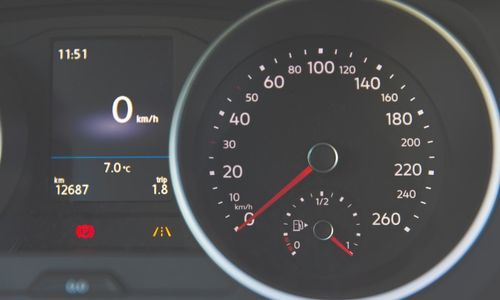
What is hypermiling?
Last updated September 9th, 2022
Hypermiling refers to utilising driving techniques with the aim of maximising MPG and exceeding manufacturer fuel economy claims. You can practice hypermiling whilst driving your car, regardless of its make or model. However, some cars are better optimised for hypermilers than others.
With high prices at the fuel pumps and a sharp rise in energy costs also beckoning, many of us are looking to seek out the cheapest petrol prices and make savings on our car’s running costs wherever possible.
Have you ever adapted your driving style or planned an alternative route to reduce your MPG (Miles per Gallon)? Have you ever left your car at home for the sake of your wallet? If so, you might be a bit of a hypermiler, perhaps without even realising it!
In this article, we will cover the origins of hypermiling, fuel-saving driving techniques, technology to help optimise MPG, the best hypermiling cars on the market – and much more! Read on to learn about the small changes, which when combined can create big savings on your fuel spend, whilst also helping to preserve our planet’s resources.
Value your car in under 30 seconds
The origins of hypermiling
The term ‘hypermiling’ was coined in 2004 by Wayne Gerdes, founder of CleanMPG – an online community for drivers looking to maximise their fuel economy whilst lowering emissions. Hypermiling quickly garnered media attention and was even named 2008’s Word of the Year by the New Oxford American Dictionary.
Hypermiling techniques
Now that you’re familiar with the basic tenets of hypermiling, let’s look at some of the tools and techniques at your disposal to help you make those all-important savings on your MPG and fuel costs:
-
Coasting
‘In-gear coasting’ simply involves removing your foot from the accelerator. Modern cars go into ‘fuel cut off’ whilst coasting in gear, meaning the engine deceleration is what’s turning it over (not the fuel). You should not attempt to ‘coast’ in an automatic car, as this can damage the vehicle.
-
Only travelling when necessary
You can avoid spending a single penny on fuel each time you leave your car at home. For shorter journeys, if feasible, consider whether getting there by public transport (or on foot) would work out cheaper. In the longer term, this could add up to big savings on your fuel costs.
-
Cruise control
From time to time, even the most conscientious drivers will vary their speed on an unobstructed road, which consumes more fuel when compared to maintaining a steady speed. Modern cruise control systems allow drivers to raise speed in 1-mph increments, which is far more economical than hitting the accelerator.
-
Planning every journey
The constant stopping, starting and speed variation associated with driving through congestion all lead to higher fuel consumption. Planning your journey times and routes to avoid rush hours and busy roads, whenever possible, can help reduce your MPG.
In some cases, taking a less congested route may take a little longer. However, if fuel efficiency is a high priority, it will be worth your while in the longer term.
-
Parking smart
When scoping out a parking space, consider that the most convenient spot might not be the most economical. If your space requires a multi-point manoeuvre to exit, you’ll use more fuel. Try opting for a spot away from the crowd, where you can simply park forwards and drive off.
-
Shopping around for fuel
Savvy hypermilers like to shop around to ensure they’re buying fuel at the best possible price. Keep an ear to the ground for fuel discounts – supermarkets often run promotions to snare shoppers to their petrol stations.
These deals and discounts are typically available to shoppers spending over a fixed amount and should be worth your while, so long as you’re not impulse buying to meet the minimum spend!
To ensure you don’t miss out on the latest deals, check out our list of the best petrol price apps around.
-
Optimising MPG with fuel additives
For those unfamiliar, fuel additives can enhance your engine’s combustion by making its fuel mist finer. When used in conjunction with effective hypermiling techniques, this can lead to greater savings on fuel spend.
-
Using the right engine oil
Your choice of engine oil can also affect fuel economy. Ideally, you should opt for a low-viscosity oil that meets the manufacture guidelines for your vehicle. A well-suited engine oil, used together with hypermiling best practices can boost your MPG – and your engine’s lifespan to boot.
-
Carpooling
When you need to make the same journey as friends or colleagues, consider carpooling with a designated driver. With more people getting there in a single vehicle – and everyone chipping in, you can save significantly on fuel, toll and parking costs.
If you’re lucky enough to live near a colleague who is willing to carpool to work regularly, this can add up to substantial savings over time.
-
Concentrating on the road
Lapses in concentration can lead to you making wrong turns or having to slow down suddenly, which can hurt fuel economy, not to mention jeopardise your safety. Keeping your phone and radio switched off and keeping conversation with passengers to a minimum can help you stay focused while driving.
Hypermiling in summer
In the summer heat, it’s tempting to crank up the air conditioning, but bear in mind that this can take its toll on your MPG. When driving at less than 40mph, open windows cause next to no drag and this option is far more fuel efficient than blasting the air conditioner.
When it come to choosing a parking spot, always look for shade. Alternatively, silver windscreen deflectors and hanging towels in the rear windows can help to minimise the impact of the sun’s heat.
If the heat gets too much and you simply must use the air conditioner, set it to recirculate, as this will cool the air that’s already in the car, whilst avoiding the need to constantly cool air from the outside.
Hypermiling in winter
In winter, there are numerous factors that can contribute to your car consuming more fuel. During inclement weather, snow, ice, rain, grit and dirt on the road can all make it harder for your car to keep going. Cold air is denser, which places more drag on the car, forcing it to push harder to get through the air. The low temperatures also reduce your tyre’s air pressure, which increases fuel wastage.
Park your car in a garage overnight (or use a windscreen cover) to save running the heater to de-ice in the mornings - and remove any snow from the roof before driving away to reduce drag. Parking in the sun will also naturally de-ice the windscreen. Waking early will avoid reckless driving to make up for lost time.
Hypermiling tech
These innovative technologies can help you achieve more MPG and adjust your driving technique for greater fuel efficiency:
-
Stop-start
The stop-start feature found in many modern cars automatically shuts off the engine whenever the vehicle comes to a stop. Some automatic cars have as many as 10 gears, which can make it easier for the engine to work efficiently. Manufacturers also constantly make aerodynamic tweaks for fuel efficiency.
-
Fuel saving apps
There are many intuitive apps to help you save at the pump.. They’re simple to use and great for tracking down low-cost petrol stations in your area. Some even allow you to collect supermarket loyalty card points!
Next-level hypermiling techniques
Now that you’re familiar with the fundamentals of hypermiling, let’s explore some of the more advanced techniques you can utilise to get more from every gallon:
-
Drafting (a.k.a. slipstreaming)
Drafting refers to following a vehicle in front of you and staying within their ‘slipstream’. This practice can be highly effective for increasing MPG, but bear in mind, you should always adhere to the highway code. It is never worth sacrificing safety for MPG.
Drafting is not exclusively a hypermiling technique – in fact, it is frequently used in motorsports! When riding closer to the bumper of opponents (don’t attempt this away from the racetrack), it is widely believed that racers can achieve up to a 40% increase in MPG!
-
Ridge riding
Ridge riding involves positioning your car away from the ridges in the road created by other vehicles and helps your car to stand out from others. By avoiding the ‘ruts’ in the road where water collects, you can reduce rolling resistance and improve your fuel efficiency.
Which cars are best for hypermiling driving?
Modern cars that are well-suited to hypermiling include the Peugeot 208 (67.4 MPG), Suzuki Swift (65 MPG) and Toyota Prius Hybrid (64.7 MPG).
If you’re in the market for a new hypermiling-friendly vehicle and thinking about selling your old car, don’t forget you can get a free car valuation with webuyanycar.
Hypermiling records
The current hypermiling world record for an electric vehicle is held by Mission Motorsport. The team including British veterans, the spouse of a serving soldier and a hypermiling expert set the current record on 10th June 2021 by driving a Renault ZOE a total of 457.4 miles on a single charge.
The feat was made possible thanks to ENSO’s innovative range-extending EV tyres. The vehicle was driven at an optimal average speed of 19mph and beat the previous record, set in France in 2018 by a staggering 124.4 miles!
The potential dangers of hypermiling
When utilised safely and correctly, hypermiling can certainly improve your fuel efficiency. However, taking hypermiling to extremes can jeopardise your safety. For instance, although keeping your speed down is good for MPG, driving very slowly can incite ‘road rage’ in some motorists.
Regarding safe hypermiling, Neil Gregg, Director of Policy and Research at UK road safety charity IAM RoadSmart said:
“The best eco-driving techniques are the simplest – keep your car well maintained, stick to the speed limit, look far ahead and anticipate slowing down at traffic lights or junctions. Remember that heavy acceleration or braking are the enemies of low fuel consumption.”





